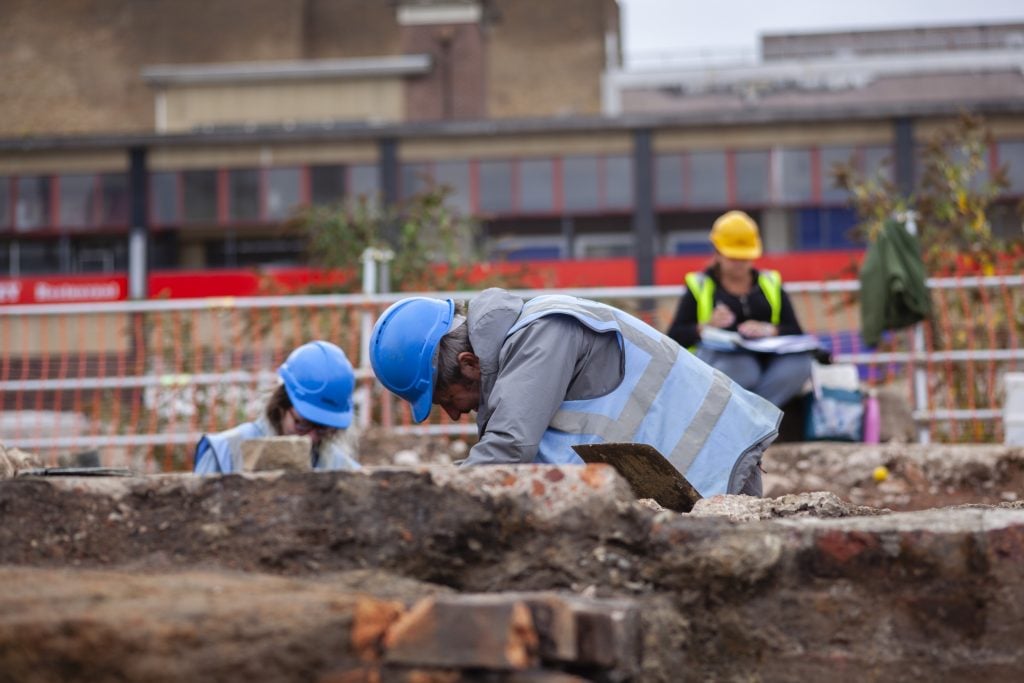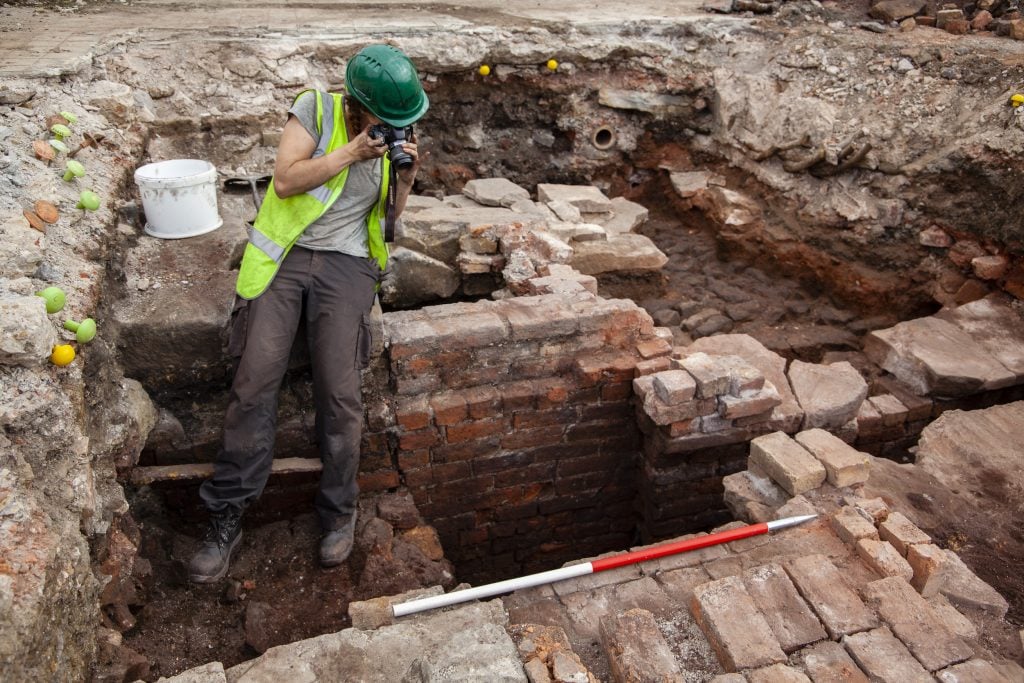Archaeology & History
Sheffield Castle Excavations Yield New Discoveries of an Industrial Past
The latest dig is working to uncover the history of the Castle’s medieval gatehouse.

Archaeologists at the former site of Sheffield Castle have recently made intriguing new discoveries about the city’s steel manufacturing history. Sheffield City Council have been undertaking archaeological digs around the site of the original 12th-century castle since 2018. This April and May, archaeologists from Wessex Archaeology and construction engineers Keltbray have been commissioned by the city to conduct a dig to discover and preserve the castle’s medieval gatehouse foundations, which had been covered up and concreted over in modern times.

Archaeologists recording 19th-century remains at the Sheffield Castle site in 2018. © Wessex Archaeology.
The area, called Castlegate, is the oldest part of the northern city, and has been inhabited since at least the 11th century. The original motte-and-bailey castle was built around 1120 by Baron William de Lovetot, following the Harrying of the North (a series of military campaigns that William the Conqueror waged in 1069–1070 to subjugate Northern England) and the establishment of Norman rule over the region. After it was destroyed during the Second Barons’ War—in which an army of barons led by Simon de Montfort battled against King Henry III and later King Edward I—a stone castle was built in its place by Baron Thomas de Furnival, with construction starting in 1270. In the late 16th century Mary Queen of Scots was imprisoned in the castle and its estates for 14 years when she was considered a threat to the English throne held by her cousin Elizabeth I.
During the English Civil War (1642-51), the House of Commons slated it for demolition. The land was used as an orchard and later a bowling green, and it was built over in the mid-20th century to create the indoor Castle Market, which was itself demolished in 2015.

Archaeologists recording 19th-century remains at the Sheffield Castle site (2018). © Wessex Archaeology.
Having removed the modern concrete layers and backfill deposits, archaeologists found remnants of a 19th-century crucible furnace—one of the oldest types of furnace for melting and casting metals. The furnace would have been used in the crucible steel-making process, for which Sheffield was world-renowned.
“This cellar would have been a hot, unpleasant place when the crucible furnaces above were working,” said Wessex Archaeology. “Reaching temperatures of 1,200 degrees centigrade, the firing process was hot and efficient, but it also produced lots of ash which needed to be cleared. The ash would fall into the ‘rake out’ pits below, where a worker, perhaps a young boy, had the back-breaking job of removing it.”
Ashley Tuck, an archaeologist leading the dig, has said: “Once a commanding centre of power for more than 600 years, the castle was left as a ruin… Since then, the remains of this once-dominating structure have lain hidden from public view. As someone who lives and works in Sheffield, it is a great honor to lead the team uncovering its remains, so we can learn more about its tumultuous history and allow it to once again take centre stage in the city.”
This archaeological work is being funded by a grant received by Sheffield City Council in 2021 as part of the conservative government’s Levelling Up Fund. The £20 million ($24.7 million) grant will fund the work, which is expected to be completed in the summer of 2025. Sheffield City Council plans to restore the old castle grounds to create Sheaf Field Park, a park and events space. Throughout May, Wessex Archaeology is inviting the Sheffield community to join them for tours through the dig site.





